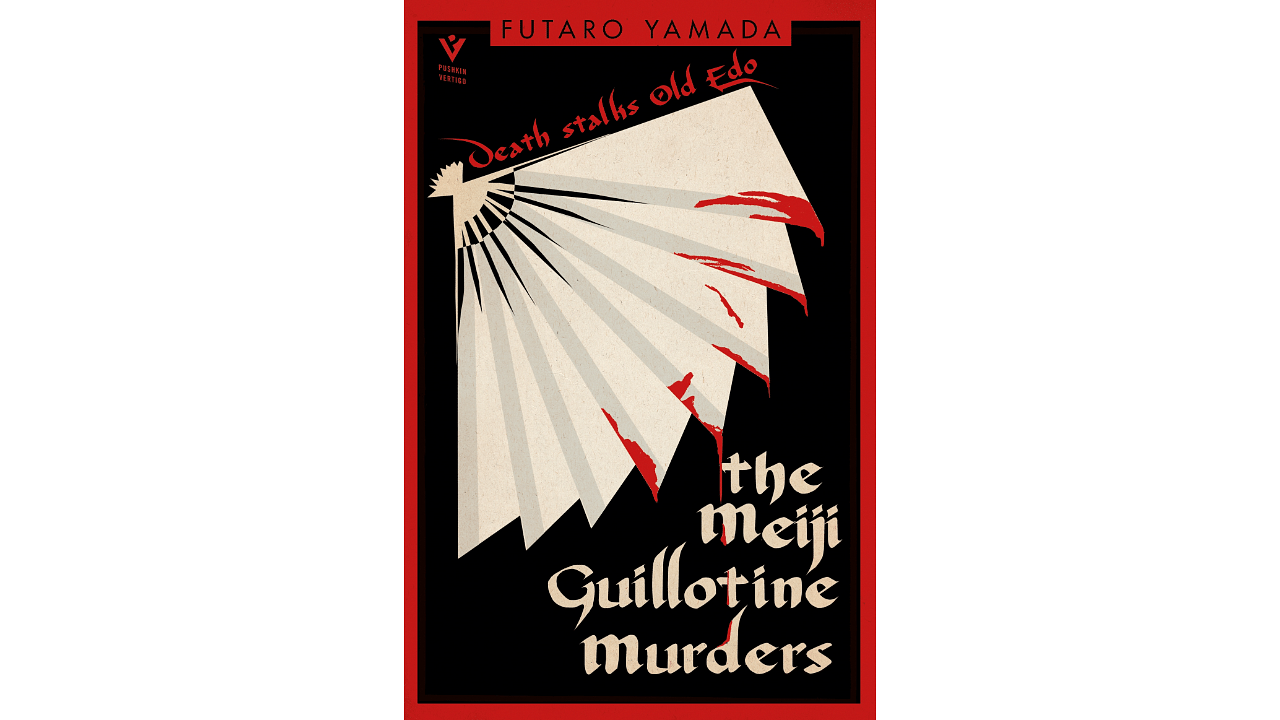
The Meiji Guillotine Murders
Set in the Meiji Era — between 1868 and 1912 — The Meiji Guillotine Murders by multi-award-winning Japanese author Futaro Yamada is a perfect fusion of history and crime.
Yamada skillfully blends meticulous research with a gripping narrative to unravel a series of gruesome murders that shake the societal foundations of 19th-century Japan. However, even with fact and fiction delicately intertwined, the book leans more towards being a historical fiction than a murder mystery.
Interestingly, Futaro Yamada published his first detective novel while still in medical school in 1947. A decade later, he published The Kouga Ninja Scrolls, the first in what became a hugely popular series about supernatural ninjas. The series inspires many adaptations and spin-offs, including Basilisk, both the Mange and the Anime series, and the 2005 movie Shinobi.
Despite not being fully aware of Japanese history, Yamada’s writing makes it easy to get hooked. The initial chapters set the scene for what’s to follow and also present a lowdown on the Meiji Era, the period after the Tokugawa Shogunate — an era of social, political and economic reform in Japan. His profound understanding of Japanese culture and history infuses authenticity into his writings, and the intentionally simple language also helps. While the book was originally published in 1979, it was translated into English by Bryan Karetnyk in 2024.
The book follows Toshiyoshi Kawaji and Keishirō Kazuki, two inspectors from the Imperial Prosecuting Office, an organisation dedicated to exposing wrongdoings in all aspects of government. Fun fact: Toshiyoshi Kawaji was a genuine person who founded the present Japanese police force, whereas Kazuki is Yamada’s fabrication. Throughout the book, the duo targets ‘rasotsu’, a newly constituted police unit that exploits the newly formed society by behaving as a “roving band of gangsters”. Their dynamic partnership drives the narrative forward, illuminating the complexities of crime and justice in a rapidly changing society.
In the first two chapters, we’re also introduced to the guillotine. While the book title makes the guillotine out to be the murder weapon, that isn’t the case. Instead, it is a device imported to Japan from France as part of the modernisation drive. This guillotine provides the readers with one of the novel’s main themes. The device brought to Japan under the guise of being a more humane form of execution, is anything but that. It offers neither peace nor order and ends up being just another method of violent execution. This is a common metaphor spotted throughout the novel. The 384-pager also provides commentary on the reality of social hierarchies, power struggles, and corruption.
The Meiji Guillotine Murders is more than a mere whodunit; it’s a compelling exploration of justice, morality, and the clash of old and new in a rapidly changing world. Just be prepared to encounter several severed heads, legs and a plethora of other violent incidents generously scattered throughout the book. The novel is definitely a far cry from the cosy, light reads currently coming out of Japan.
Jimbocho is a monthly column where we sift through popular Japanese books. Often called the ‘town of books’, Jimbocho is a neighbourhood in Tokyo that celebrates Japan’s rich literary heritage. Send your feedback on X @asra_mavad